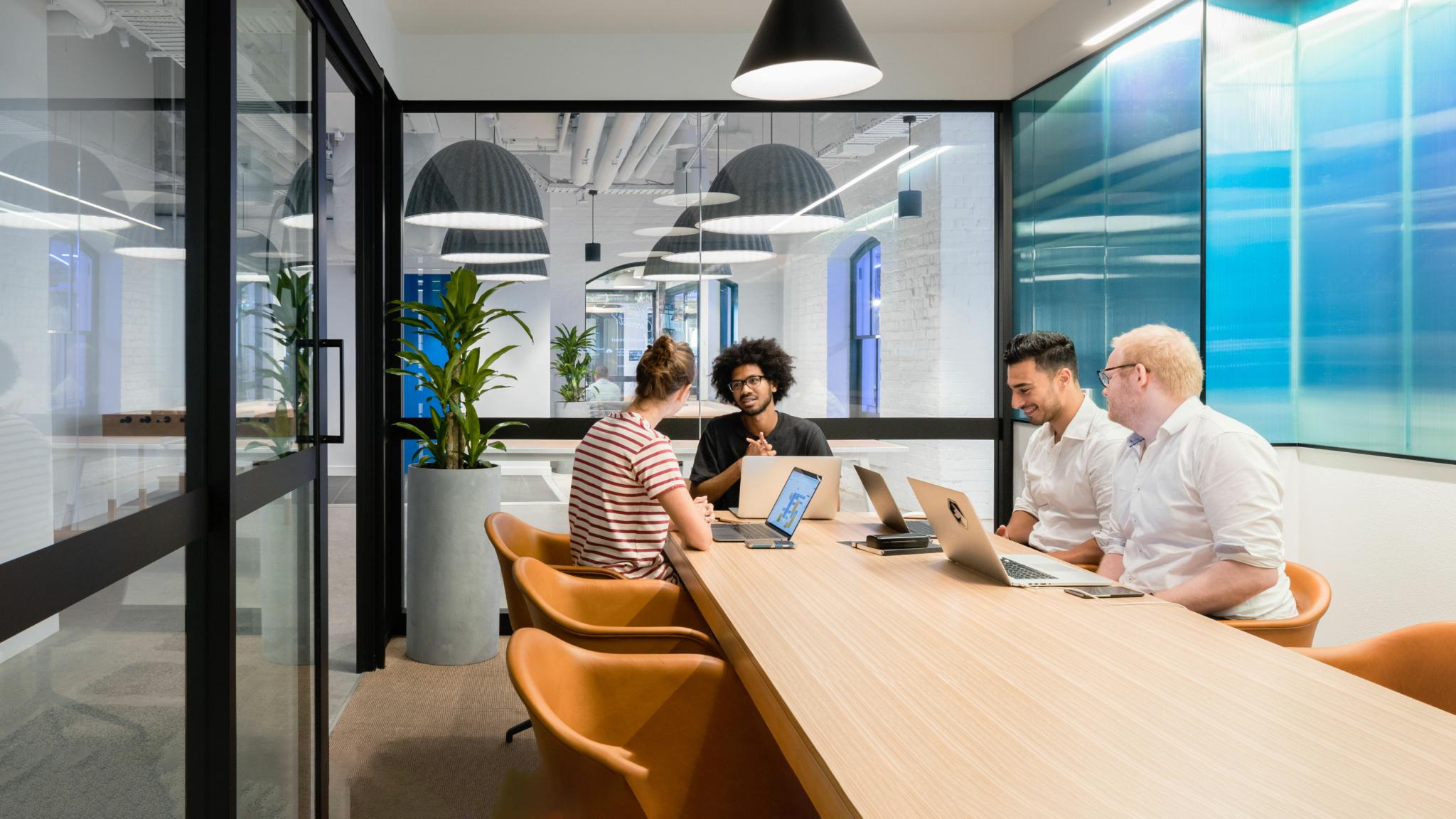Around the world, the average length of a commercial lease is shrinking. For years now, many businesses have been turning away from traditional office leases and making flexibility their main real estate priority.
The rising popularity of temporary office space is one of the clearest indicators of this trend. In this article, we’ll take a look at how these kinds of short-term office leases can benefit a company, as well as how to choose a temporary office space that’s right for your business.
What is a temporary office space?
A temporary office space is any space leased on shorter or more flexible terms than that of a traditional office lease.
Whereas a standard office lease in the U.S., Canada, and the UK might commit a business to that space for at least five years, temporary office spaces allow smaller, more agile, and fast-growing businesses to enjoy all the benefits of having a physical office space without the restrictions and contractual obligations of long-term leases.
The benefits of temporary office space
There are several benefits to using temporary office space rather than getting locked into a traditional long-term lease. Here are a few of the main advantages:
Flexibility
Temporary office spaces can be rented on a rolling monthly basis and without early exit fees, giving businesses the flexibility to move to larger premises as their teams grow or if their business needs change.
Suitability
Whether you’re a two-person business or you employ thousands, the wide variety in the size, scale, and location of temporary office space means you’re more likely to find a workspace that fits your company.
Adaptability
The flexible rental terms of a temporary office suite can allow businesses to expand and shrink their floor plans without having to move to a completely new site. This can save money and cause less disruption for teams during times of change.
Cost-efficiency
Temporary office spaces tend to come fully furnished and equipped with everything a business needs to hit the ground running—and with all of the necessary facilities already in place. This can save businesses money in comparison with the cost of setting up and maintaining a permanent office space.
Convenience
Temporary office spaces are often centrally located in popular neighborhoods close to transport hubs, shopping districts, entertainment venues, and nightlife. Not only does this make it easier for people to access the office space, but it attracts potential new hires from across the entire city.
Types of temporary office spaces
There are several different types of temporary office space—from shared spaces to dedicated private offices to even virtual offices. Here are some of the most common ones:
Shared office spaces
Shared office spaces are exactly what they sound like: shared spaces in which several companies operate from the same premises. They’re a great way to reduce costs, as businesses don’t have to pay for the entire office space and can share facilities, common areas, and amenities.
Full floor office space
Full floor office spaces are private, self-contained offices that are rented out to a single business. They come fully furnished and equipped with everything the company needs to do business, allowing teams to move in and get to work straight away. They can also be branded with a company’s logo and customized to meet specific requirements.
Dedicated desks
Individual desks might only accommodate one person, but they’re still a type of temporary office space. A dedicated desk is typically an unassigned seat in a shared coworking space, which any employee is free to use for a short while. They are sometimes booked in advance, but they can also be used on an ad hoc basis by a worker who needs one.
Meeting rooms
Many temporary office spaces offer meeting rooms that can be booked by the hour and are equipped with conferencing cameras, A/V tools, and other virtual meeting tech. This can be a lifeline for small business owners and startups that don’t have a permanent office but who need to meet with clients in a professional setting that’s convenient to get to.
Is temporary office space the same as coworking space?
While coworking spaces can be described as a type of temporary office space, there are big differences between the two. By definition, a coworking space is communal. They tend to be shared workspaces with a focus on collaboration and interaction.
This means that coworking spaces are less likely to offer private rooms or dedicated offices, which can be challenging for companies that work with confidential or sensitive information.
Satellite offices vs. temporary office space
Opening a satellite office can be a risky venture, particularly if a business is trying to expand into a new and untested market. This is where temporary office space can be especially useful.
Temporary office space can mitigate risk by helping companies avoid the commitment of being locked into a satellite office, and the costs associated with an office space that may not accommodate unforeseen needs.
How to choose the best temporary office space
Whether you’re a freelancer in need of a coworking space, or a business searching for a flexible, temporary office solution, WeWork provides beautifully designed, adaptable workspaces that can be configured to meet the changing needs of your team.
No matter how large your company is, WeWork can create a personalized office space with layouts that scale to suit your privacy and design requirements.
For even more flexibility, WeWork On Demand lets you access temporary office space and meeting rooms in hundreds of locations across dozens of cities, without the hassle of a monthly commitment. You can search and pay for available office space near you by using the WeWork On Demand app, and always find the space, facilities, and community your business needs to stay productive.
Steve Hogarty is a writer and journalist based in London. He is the travel editor of City AM newspaper and the deputy editor of City AM Magazine, where his work focuses on technology, travel, and entertainment.
Want to learn more about flexible work?










